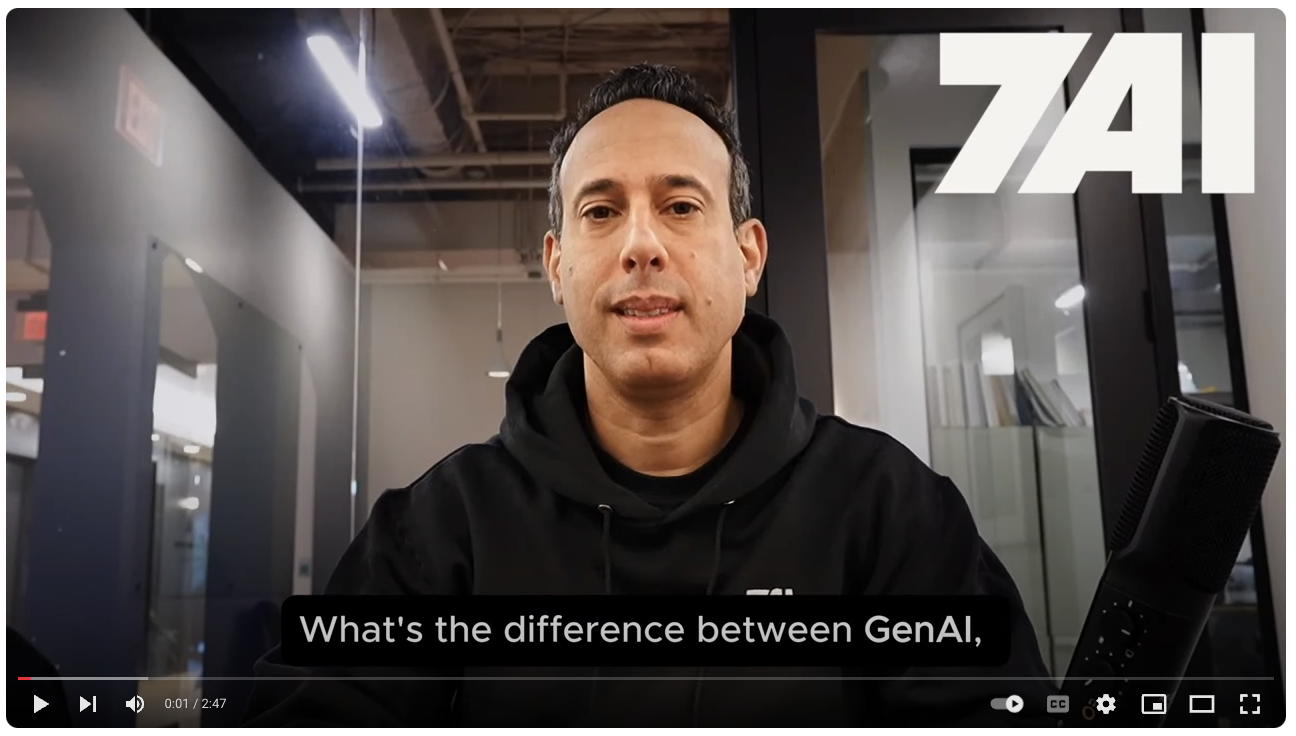The evolution of artificial intelligence has been nothing short of transformative. It began with Generative AI, progressed into intelligent AI agents, and is now heading toward the concept of swarms of agents—a powerful interconnected system of AI entities working collaboratively to achieve complex goals. As we move into 2025, this evolution promises to redefine industries, making “swarm intelligence” the next frontier.
In this post, we look at the evolution of AI from GenAI to agents and then what we believe to be the next stage in how AI will transform how defenders approach cybersecurity: Swarming Agentic AI.
Phase 1: Generative AI
Generative AI represents the first major leap. Models like OpenAI’s GPT or DALL·E are designed to generate content, from text and code to images and videos. These systems are trained on massive datasets, allowing them to produce results that mimic human creativity. This was the beginning, and adoption and innovation happened at a pace we've never seen.
Key Features:
- Static Outputs: Generative AI produces high-quality responses but lacks autonomy or understanding of long-term objectives.
- Human Dependency: While capable of complex tasks, they rely heavily on humans for prompting and contextual decision-making.
Use Cases:
- Content creation for marketing.
- Code generation for developers.
- Image and video synthesis for design.
The GenAI phase marked a rapid transition from AI being viewed as science fiction to widespread use of tools like ChatGPT as augmenting human productivity.
Phase 2: The Rise of AI Agents
The next step was AI agents, which shifted from passive generators to active problem solvers. These agents combine the capabilities of Generative AI with decision-making and goal-oriented behavior.
Defining Characteristics:
- Autonomy: Agents act independently, using tools, gathering information, and making decisions without constant human intervention.
- Tools and Integration: They access external systems (APIs, databases) to perform tasks beyond their native capabilities.
- Adaptability: Agents adjust to new information and dynamically change strategies to meet objectives.
This is where we saw startups building cybersecurity agents that automate tasks like triage, investigation, and threat hunting. These agents intelligently interact with data from multiple systems, ensuring they deliver real-time insights with minimal manual effort.
Limitations:
- Limited to singular or narrowly defined objectives.
- Collaboration between multiple agents remains challenging.
As with GenAI, the move to AI agents marks a huge leap forward in how we can use AI to perform manual, repetitive tasks at speed. Once AI had access to tools and the ability to execute tasks, the next step was inevitable: coordinating between agents.
Phase 3: The Dawn of Swarming Intelligence
In 2025, we expect a shift toward swarms of agents—a network of AI agents working together in a highly coordinated and decentralized manner to achieve multifaceted goals. Inspired by natural systems (like ant colonies or bee hives), swarms of agents are poised to handle complex, interconnected problems.
Defining Characteristics:
- Distributed Intelligence: Unlike isolated agents, swarms communicate and collaborate, pooling their intelligence to solve large-scale challenges.
- Dynamic Coordination: They can adapt in real time to changing conditions, allocating resources and roles as needed.
- Emergent Behavior: The collective behavior of the swarm often exceeds the capabilities of any single agent.
- Highly Specialized Scope: Rather than GenAI where answers are given regardless of scope and hallucinations are common, the specific scope and mission of each agent provides the necessary guardrails to prevent an "answer no matter what" scenario.
7AI’s Vision for 2025
Imagine a cybersecurity swarm managing an enterprise’s entire security ecosystem. One agent identifies suspicious activity in an EDR system. Another validates it by correlating cloud logs. A third examines user behavior patterns in identity systems. Together, the swarm:
- Investigates threats collaboratively.
- Prioritizes incidents dynamically.
- Optimizes system resources to minimize response time.
This decentralized, collective intelligence enables unprecedented efficiency, allowing organizations to counteract sophisticated cyber threats in real time.
Why 2025 Will Be the Year of Swarm of Agents
- Technological Maturity: Advances in large language models, multi-agent architectures, and communication protocols will make swarms operationally viable.
- Industry Demand: The complexity of modern problems—be it in cybersecurity, healthcare, or logistics—necessitates distributed, collaborative AI systems.
- Trailblazers Like 7AI: Companies pioneering the integration of swarms will set the stage for widespread adoption.
Conclusion
The journey from Generative AI to agents and, ultimately, to swarms of agents reflects AI’s natural evolution toward greater autonomy, collaboration, and problem-solving capacity. While Generative AI set the foundation, and agents showed us the potential for autonomy, swarms of agents promise a future where collective intelligence reshapes industries.
As we step into 2025, companies like 7AI are poised to lead this revolution, showcasing how swarms can address the complex challenges of our interconnected world. For organizations and innovators, the message is clear: embrace the swarm.

